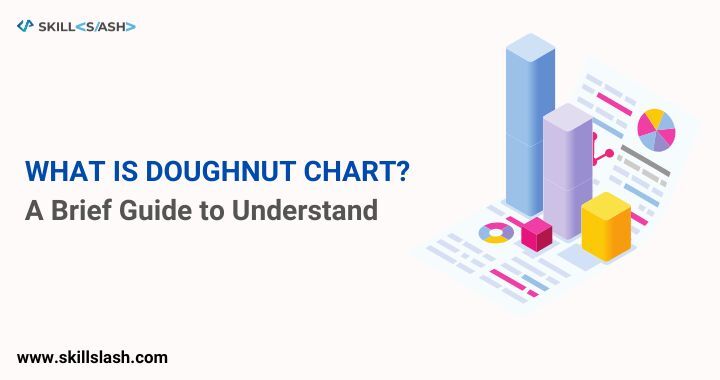It's as crucial to understand the data as it is to perform the analysis itself in the field of data analytics. As an analyst, you have the responsibility of convincing your superiors and the general public that the data points in a particular direction, even if various people may interpret the data in different ways once it has been analyzed.
When trying to explain data, it's never a good idea to just show a bunch of spreadsheets or paragraphs of text. If you want to do a better job of explaining your data, you need some kind of visual aid. This demonstrates why it's crucial to use visuals while interpreting data.
In this article, we will learn about the doughnut chart and try to have a complete understanding of it. Let's start with a short introduction.
Doughnut Chart
As a method for data visualization, the doughnut chart is currently the most popular option. Your data are depicted as a component of the whole in a doughnut chart. The main shape is circular, with a sizable depression smack in the middle. In most cases, the doughnut chart is used to segment a particular field according to the proportion of coverage it received. It is also possible to use it for numbers rather than percentages; however, the viewer will need to be made aware of the total of all the portions of the doughnut chart.
Advantages of a Doughnut Chart
The ease with which one can both construct and interpret a doughnut chart is perhaps the greatest benefit of using one.
- One of the most fundamental ways that data can be represented is through the use of a doughnut chart. There are not many tools that are superior to a doughnut chart in situations when you need to explain the predominance of a particular field in your analysis or the share of competitors in a market.For example, In most cases, the data analysis software that you use will also provide you the option to rearrange the values of the metrics displayed in the doughnut chart in order to better illustrate your argument.
- In addition, a doughnut chart gives you several possibilities to connect the design of your chart with the design of the rest of your presentation. Doughnut charts are commonly used in marketing and sales presentations. You can make it in a variety of colors, or you can make it in a variety of shades of the same color.
- You are very likely to come across doughnut charts, which are among the styles of graphical representation that are the easiest on the eyes of the reader. When displayed on a page alongside text, they do not take up a significant amount of additional space. They are also the form of pictorial representation that require the least amount of explanation. They do not require any additional explanation text to be written. At other times, the percentage share of the predominant measure is all that is required to adequately explain them.
Disadvantages of a Doughnut Chart
Recent years have seen a proliferation of representational formats that use a three-dimensional (3D) image to convey information.
- When performing an analysis of a doughnut chart in three dimensions, one encounters a number of challenges, though.
- In addition, the chart is a wonderful tool to utilize if the number of metrics utilized in your area of expertise is quite small, possibly numbering in the single digits. However, your doughnut chart becomes more difficult to interpret as the number of sectors increases.
- Additionally, there is not much room for an explanation, should one be necessary, and additional methods of data analysis must be utilized to identify outliers.
Doughnut Chart and Pie Chart: The Difference
The huge hole in the middle of a doughnut chart is the most noticeable distinction between it and a pie chart. If you want to draw attention to a specific piece of information—say, the total of all the doughnut chart's sectors—you may do so by placing that piece of information in this hole. Doughnut charts can thus display slightly more information than pie charts. The two concentric doughnuts can represent two separate data series, making the doughnut chart a very versatile data visualization tool. In the case of a pie chart, this cannot be done.
Conclusion
An alternative way of looking at a doughnut chart is to think of it as a more advanced variant of a pie chart. When presenting market share, product categories, product sub-categories, etc., this kind of chart can be really helpful. This article briefly discusses the doughnut chart, its advantages and disadvantages, and the difference between a doughnut chart and a pie chart.
Donut charts and other data science concepts may pique your curiosity. Skillslash can help you build something big here. With Data Science Course In Delhi, and Data science course in Nagpur with placement guarantee, . Skillslash can help you get into it with its Data science course in Mangalore . you can easily transition into a successful data scientist. Get in touch with the support team to know more.
0







